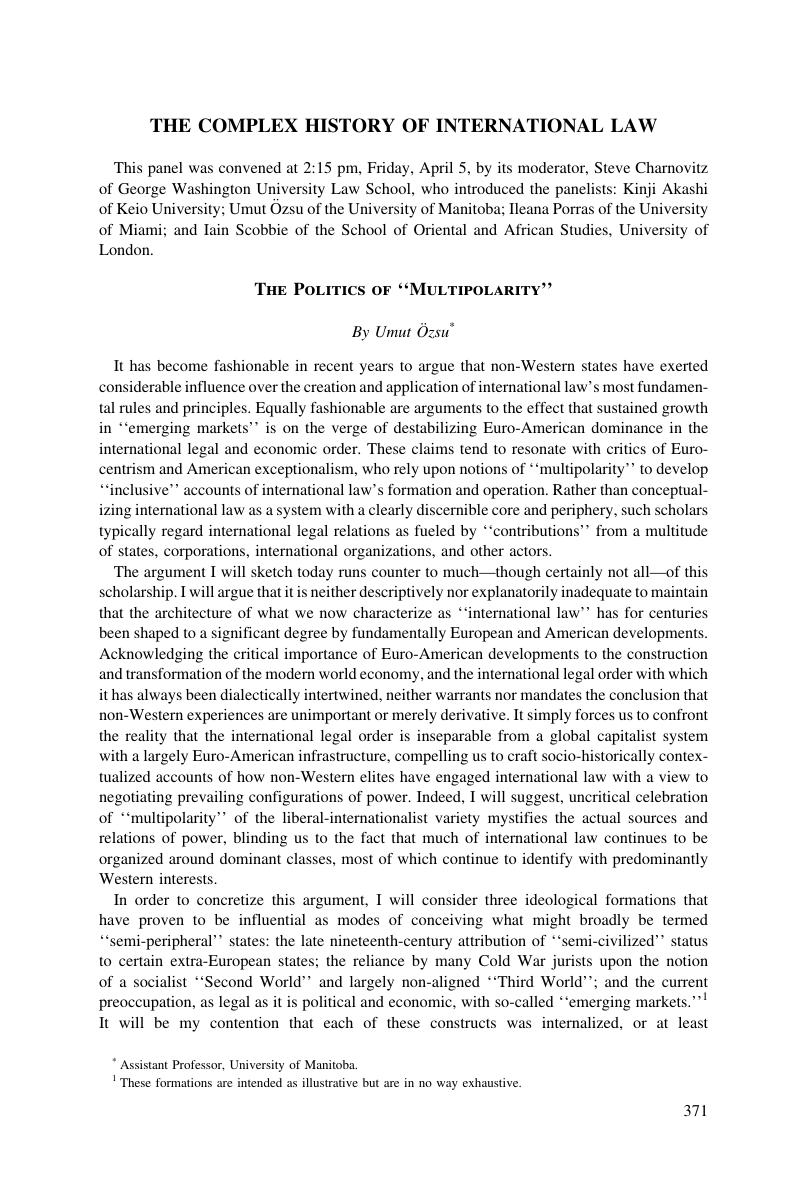No CrossRef data available.
Published online by Cambridge University Press: 20 January 2017

1 These formations are intended as illustrative but are in no way exhaustive.
2 Lorimer, James, The Institutes of the Law of Nations: A Treatise of the Jural Relations of Separate Political Communities 101 (1883)Google Scholar.
3 Id. at 102.
4 Id.
5 Id. at 101–02.
6 Cf. Koskenniemi, Martti, The Gentle Civilizer of Nations: The Rise and Fall of International Law 1870–1960, at 33 (2001)CrossRefGoogle Scholar.
7 von Liszt, Franz, Das Völkerrecht, Systematisch Dargestellt 1–4 (1898)Google Scholar.
8 UN Conference on the Law of Treaties, First Session (Vienna, Mar. 26–May 24, 1968), Official Records, Summary Records of the Plenary Meetings and of the Meetings of the Committee of the Whole, UN Doc. A/CONF.39/11, at 233 (Belgium), 280 (Ukrainian S.S.R.), 297 (Lebanon).
9 For the most famous exposition, see Mohammed Bedjaoui, Towards a New International Economic Order (1979).
10 For the official history, see G-20, The Group of Twenty: A History 8 (2008), at http://www.g20.utoronto.ca.
11 See, e.g., John Hawksworth, The World in 2050: How Big Will the Major Emerging Market Economies Get and How Can the OECD Compete? (2006).
12 Jim O’Neill, Building Better Global Economic Brics (2001), at http://www.goldmansachs.com/our-thinking/archive/archive-pdfs/build-better-brics.pdf. For a recent restatement, see Jim O’Neill, The Growth Map: Economic Opportunity in the Brics and Beyond (2011).
13 Trevor Manuel, quoted in The Group of Twenty, supra note 10, at 25.
14 Luiz Inácio Lula da Silva, The G-20 Moment, 27 New Persp. Q. 33, 34 (2010).